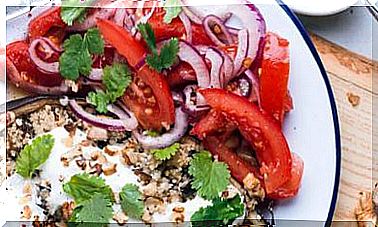Legumes: Benefits Of Taking Them Daily In The Vegetable Diet
Legumes are extraordinarily rich and nutritionally balanced foods. They provide protein, energy, fiber and micronutrients that help prevent the most common health disorders.

Legumes are essential ingredients of the Mediterranean diet and in the vegetable diet they are essential to achieve a sufficient protein intake. In addition, its possibilities in the kitchen go far beyond the typical stew.
For FAO, World Pulses Day, which is celebrated every February 10, is an occasion to raise public awareness about the nutritional benefits of regular consumption of pulses.
Legumes: a food for the future of the planet
They are not just nutritious foods, they also contribute to sustainable food systems and, thereby, reduce hunger and combat climate change. FAO summarizes its benefits:
- Legumes fix nitrogen from the atmosphere and provide it to the soil, increasing its fertility.
- They have a wide genetic diversity that allows the development of more varieties that are resilient to climate change.
- It has a low water footprint compared to protein sources of animal origin.
From a botanical point of view, legumes or legumes are plants that produce a pod with seeds inside. The most common in our environment are lentils, chickpeas and dried beans.
In addition, the consumption of soy products – the legume that reigns on the planet – such as tofu or milk , has become normalized, especially among people who follow a vegetarian or vegan diet .
On the other hand, the peanut is a legume that we consume as a dried fruit, and the pea is also a legume, although we eat it as a vegetable.
The health benefits of legumes
Legumes are the category of foods with a more balanced nutritional profile: they provide both slow-absorbing carbohydrates (the most recommended) and protein, as well as fiber and a little fat. And they are rich in micronutrients: minerals and vitamins of group B and antioxidant polyphenols.
Legumes are particularly rich in resistant starch and soluble fibers that feed beneficial gut bacteria.
These bacteria produce short-chain fatty acids (SCFA), such as butyrate, which reduce the risk of colon cancer and have beneficial effects on immunity, the nervous system, and metabolism.
In addition, fiber regulates blood sugar and cholesterol levels. In this way, it prevents obesity, diabetes, hypertension, high cholesterol and triglycerides, arteriosclerosis, and heart and brain attacks.
Simply put, legumes promote overall health. So much so, that its habitual consumption is one of the main coincidences between the dietary models that are related to greater longevity.
In fact, for every 20 g of legumes added to the daily consumption of legumes, the mortality rate falls by 7%, according to a study by the University of Leeds (United Kingdom).
They need to be soaked and cooked
The nutritional quality of legumes is hampered by certain compounds, such as phytates and lectins, but they are deactivated by soaking, sprouting, fermentation, and cooking.
People who are not used to legumes may feel bloated and generate gas during digestion. It is a temporary problem, but you can prevent it by consuming some legumes in pureed form, starting to consume them in small quantities that you will increase and accompanying them with spices and digestive medicinal plants (here are other useful tips to prevent gas).
Nutritional properties of the main legumes
Lentils
For example, 200 g of cooked lentils provide:
- 230 calories.
- 18 grams of protein.
- 16 grams of fiber.
- 40 grams of slow-absorbing carbohydrates.
- 37% of the daily needs of iron.
- 90% of folic acid.
- 17% of the magnesium.
- 16% of potassium.
- More than 10% of vitamins B1, B3, B5 and B6, as well as phosphorus, zinc, copper and manganese.
Lentils are an excellent source of protein and iron in a vegetarian diet. To better absorb the mineral, it is advisable to combine them on the menu with an ingredient rich in vitamin C, such as raw orange or red pepper.
Chickpeas
One cup (164 g) of cooked chickpeas contains approximately:
- 269 calories.
- 14.5 grams of protein.
- 12.5 grams of fiber.
- 26% of the daily needs of iron.
- 71% of folic acid.
- 29% of copper.
Chickpeas are particularly beneficial for lowering blood sugar and increasing insulin sensitivity compared to other carbohydrate-rich foods.
Consuming chickpeas regularly improves blood cholesterol levels and favors the good state of the intestinal microbiota.
Green peas
One cup (160 grams) of cooked peas contains approximately:
- 125 calories.
- 8.2 grams of protein.
- 8.8 grams of fiber.
- 24% of the daily needs of folic acid.
- 48% of vitamin K.
- 30% of vitamin B1.
Fresh peas provide proportionally less protein than other legumes, however, once dried and reduced to flour, they become a concentrated source of amino acids that is consumed even by athletes.
Dried beans
One cup (256 grams) of cooked dried beans contains approximately:
- 215 calories.
- 13.4 grams of protein.
- 13.6 grams of fiber.
- 23% of the daily needs of folic acid.
- 20% of vitamin B1.
- 17% of copper and iron.
There is a wide variety of beans (or beans) that differ in shape, size and colors. Those of darker colors are usually richer in antioxidant polyphenols. In this sense, red beans and azukis stand out.
Soy
One cup (172 grams) of cooked soybeans contains approximately:
- 298 calories.
- 28.6 grams of protein.
- 10.3 grams of fiber.
- 49% of the daily needs of iron.
- 41% of vitamin K.
- 29% of vitamin B2.
Soy is the richest in protein and iron. It also contains isoflavones, antioxidant and phytoestrogenic compounds (they gently mimic the action of female hormones in the body), which promote the regulation of the endocrine system, especially in menopause. That is why they help combat the discomfort and imbalances that are associated with this stage of women’s lives.
The most common ways to consume soy are in the form of milk or tofu (fresh cheese made from milk). Other options are fermented soybeans (miso, tamari, etc.) and textured soy protein preparations.
Peanuts
Half a cup (73 grams) of peanuts contains approximately (47):
- 427 calories.
- 17.3 grams of protein.
- 5.9 grams of fiber.
- 50% of the daily needs of vitamin B3.
- 32% of magnesium.
- 27% of folic acid.
- 25% of vitamin E.
- 22% of vitamin B1.
Peanuts are as healthy as any other legume, but they must be consumed in moderate amounts due to their high fat content, which, although they are mostly healthy monounsaturated, provide a large amount of calories.
How many servings of legumes should you eat?
In the traditional Mediterranean diet a minimum of three servings is consumed. In the vegetable diet, since meat and fish are not present, a daily consumption of 2 to 3 servings of legumes is necessary to reach the amount of protein we need (0.8 g per kilogram of body weight).
By a portion of legumes we understand:
- 70 g (of chickpeas, lentils, beans) dry or 175 g cooked.
- 150 g of firm tofu.
- 70 g of peanuts.
- 150 g of fresh peas.








